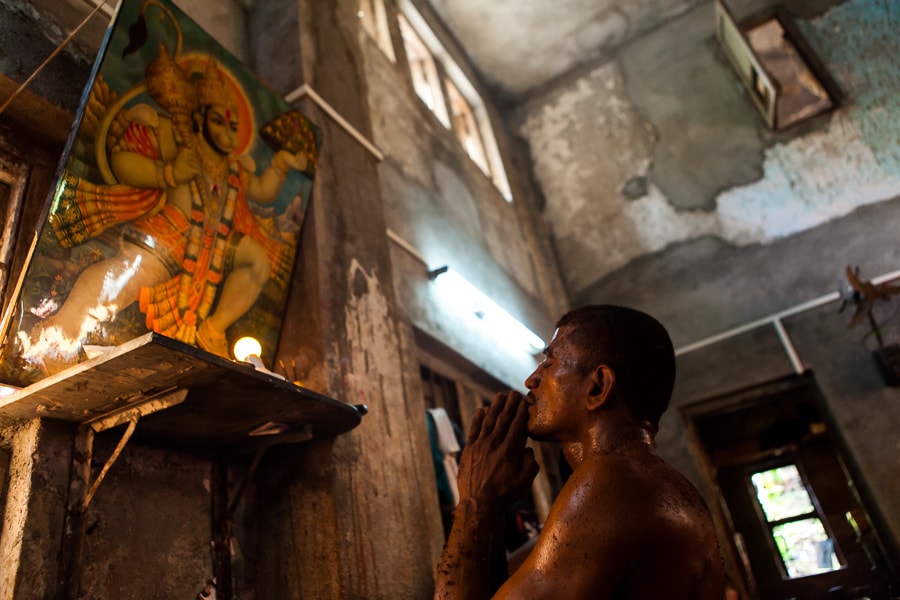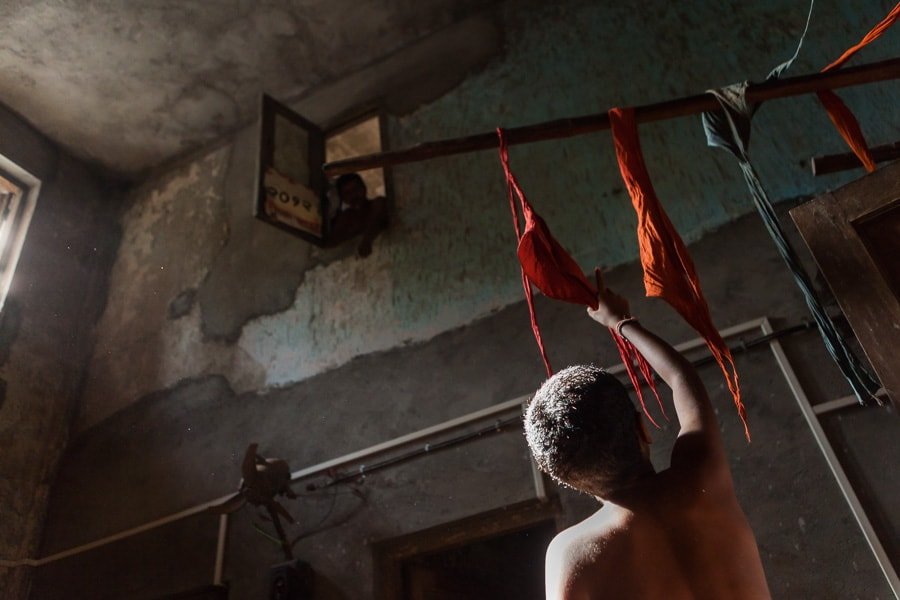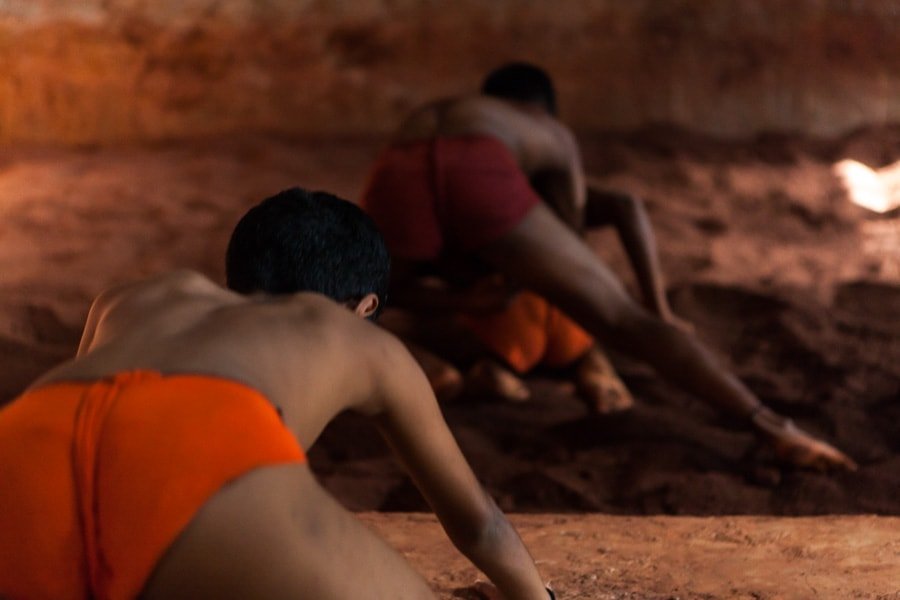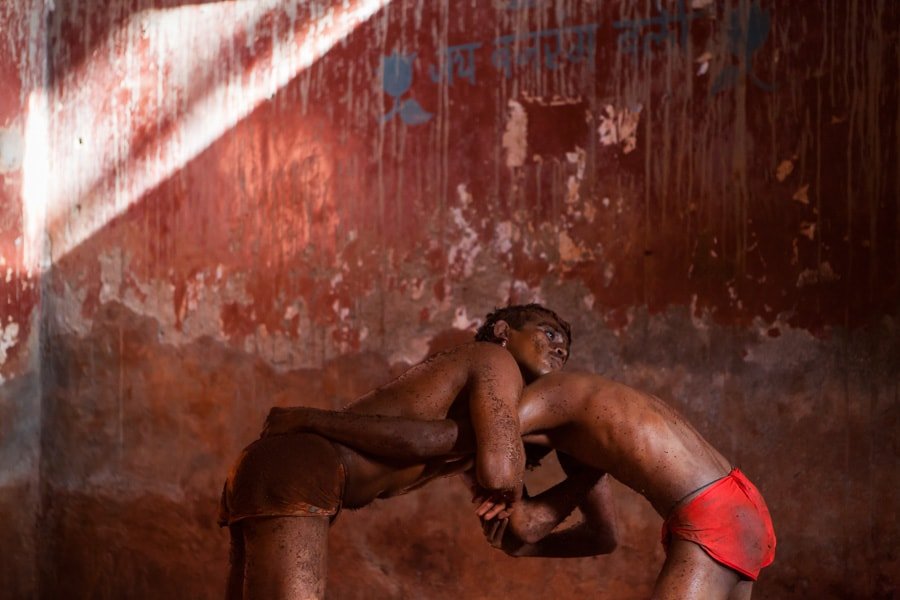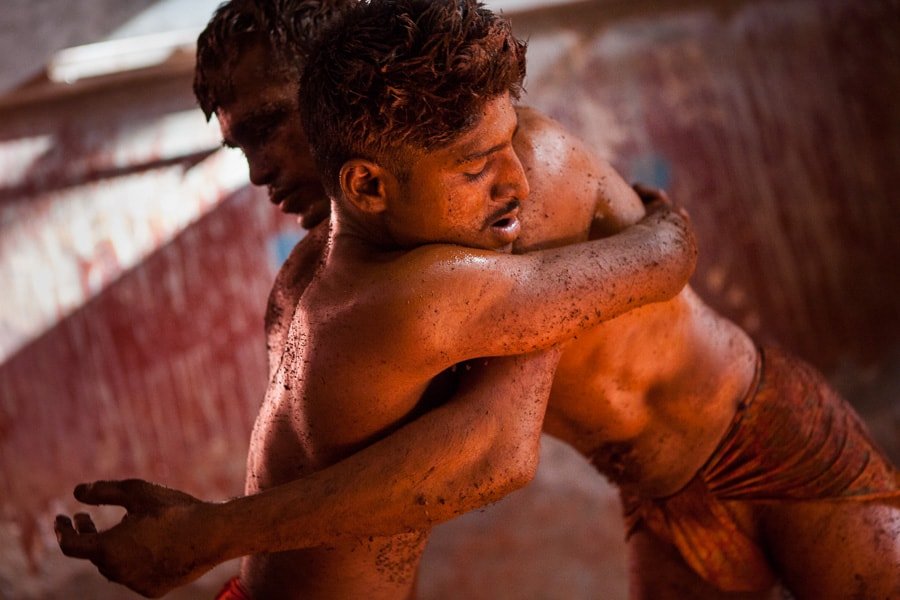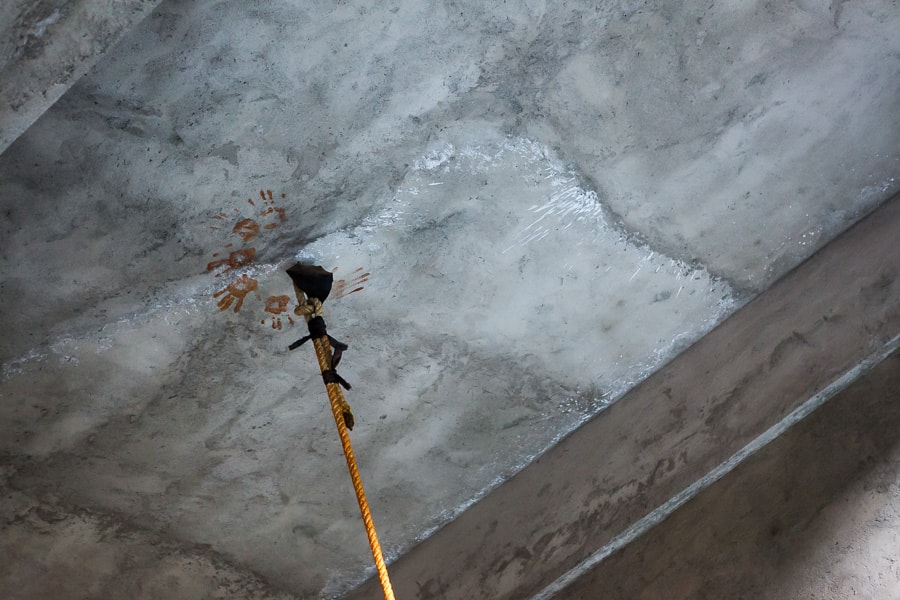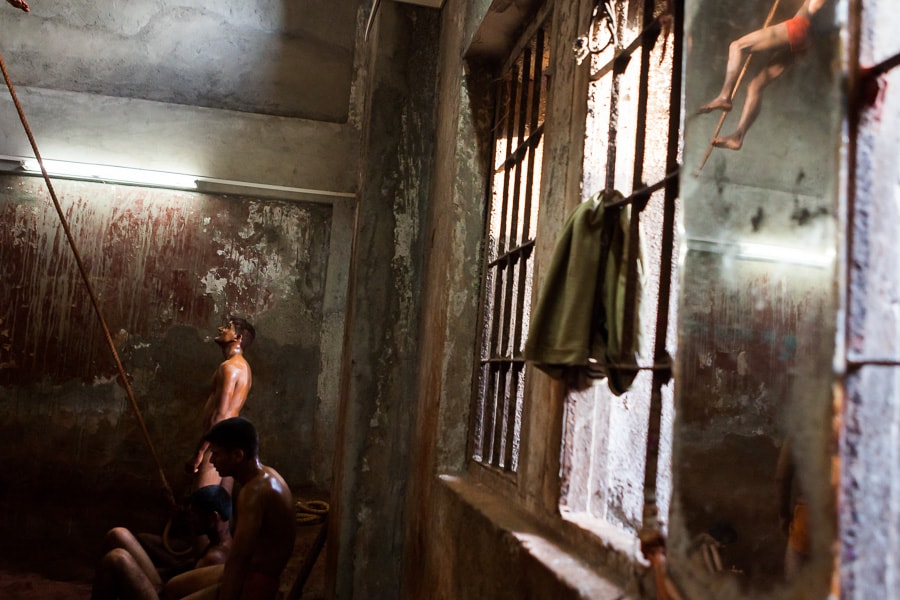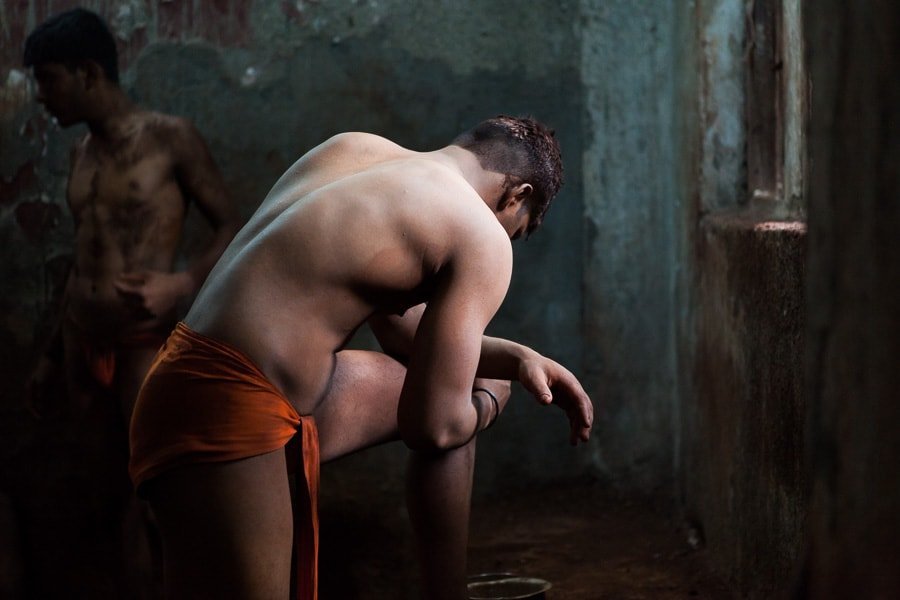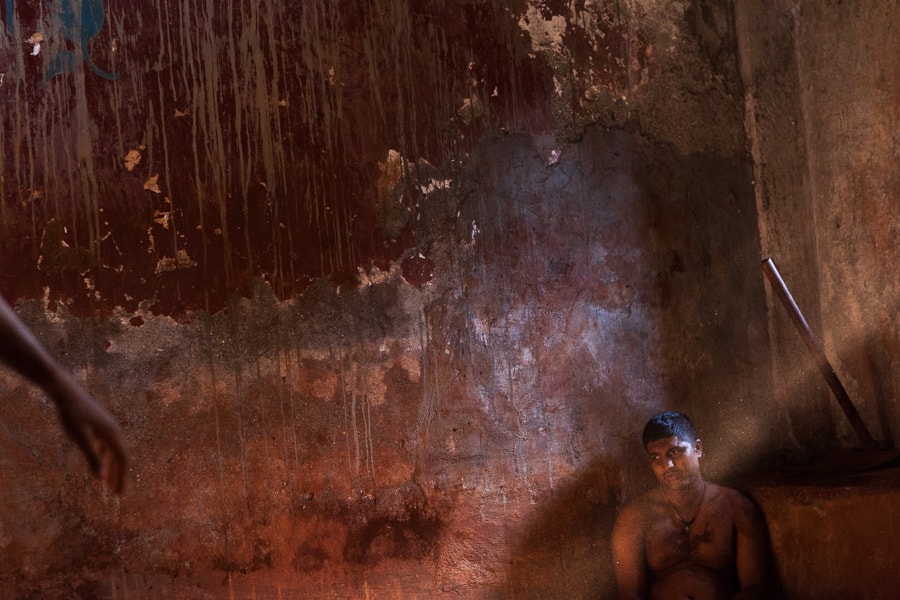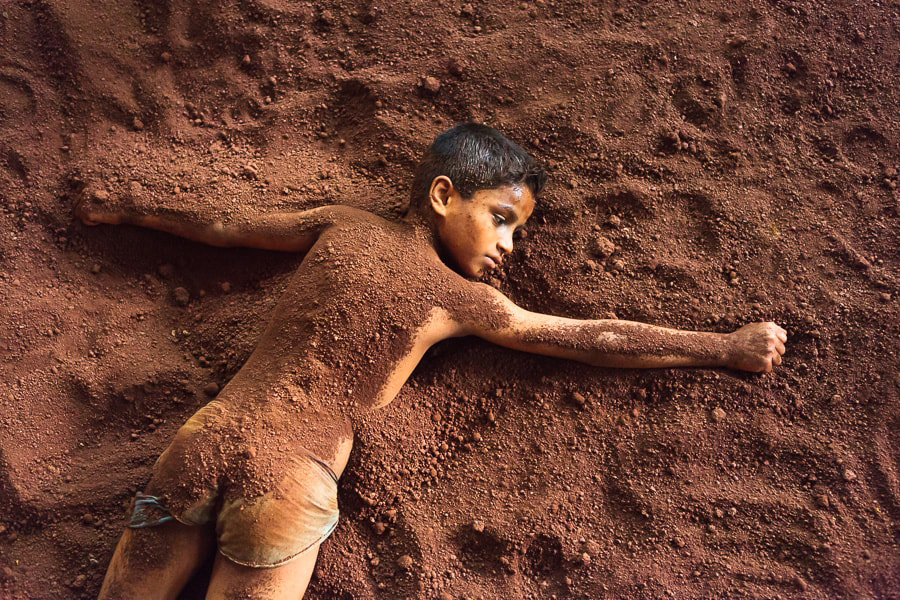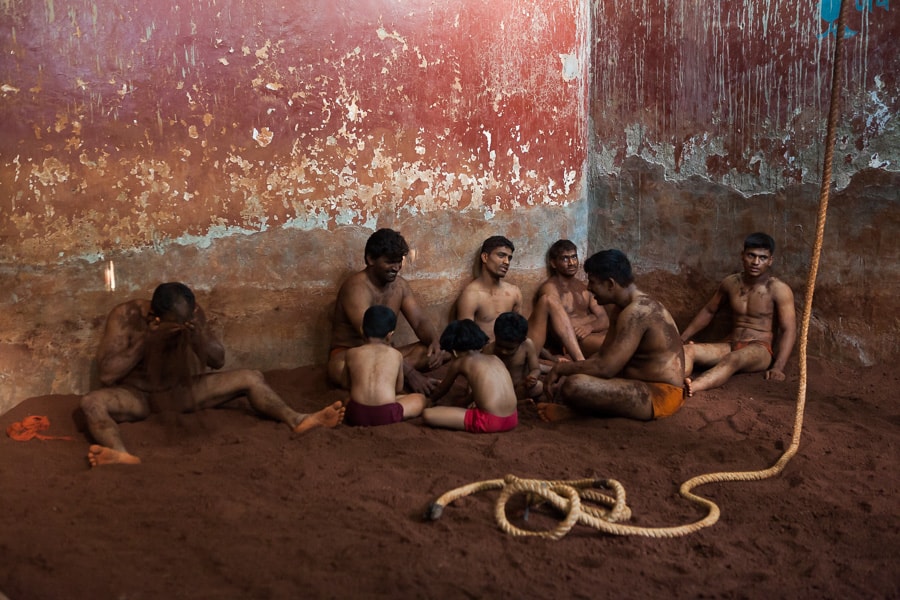BITE THE DUST
Kushti is an age-old form of wrestling native to the Indian subcontinent. While the practice has lost much popularity to sports like cricket or football, there are still people who keep the tradition alive. In this old stone house, hidden inside a backyard in India’s megacity Mumbai, wrestlers practice kushti the way it’s been done for ages. The akharas, as the gymnasiums are called, are combined training and residential spaces. Many wrestlers live here, often for years in a row. Others – children, or those who have families – come only for the afternoon trainings. The main room has a high ceiling, and a tiled stone floor. The walls are heavy, with layer upon layer of red and turquoise paint. It’s cool inside; a welcoming contrast to the burning afternoon heat outside.
Kushti is a blend between two wrestling traditions: the South Asian malla-yuddha and the one brought by the Mughal conquerors in the 16th century. Kushti has been practiced throughout the continent since then. Stories from the past tell of great athletes with seemingly superhuman powers – models that continue to inspire wrestlers today. Just like kushti is more than a sport, akharas are more than gyms. The wrestlers follow a strict physical and psychological regimen: they eat a special diet based mainly on milk, ghee and almonds – sattvic foods which are believed to balance the intense nature of wrestling. Their training incorporates both exercises common to other types of wrestling and ones derived from India’s yogic tradition. But the declining interest in kushti and the communal lifestyle means that many gymnasiums have closed down, and public interest is dwindling.

